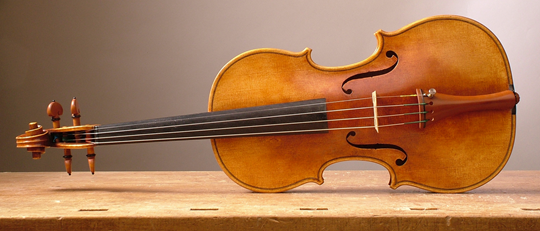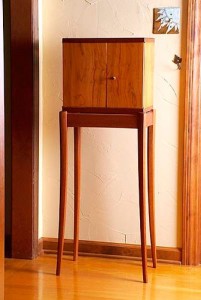
As a student of James Krenov I make wooden planes and teach others how to make them. I also like old things, so I have a modest collection of metal Stanley/Bailey bench, block, and specialty planes, most about 100 years old now. I recondition these for use, and I do use the specialty planes and a few of the block planes. I rarely, though, use any of the bench planes, which I find not as friendly or versatile as my wooden planes.
At the Handworks event in Iowa in 2017 I had the opportunity to meet Konrad Sauer and to try the infill hand planes that he has been making for a dozen years or so. If you’re not familiar, see Sauer and Steiner to see some of his work. Based on tools made by Scottish/English makers Spiers, Mathieson, and Norris, in the 1800’s, Konrad’s planes are exquisite objects, made entirely by hand, with dovetailed bodies of steel and bronze with infills of rare and exotic woods. Besides being exceedingly handsome and well made, they are very fine and satisfying to use. At that meeting in Iowa, I was taking microns-thick shavings from highly figured maple and leaving a perfect surface.
While I would dearly love to own a piece of Konrad’s work, unfortunately it’s not a practical option for me (read: I can’t afford it). But my interest in infill planes, as a type, was whetted, and so I started looking at antique tools.
The plane pictured above is a “handled smoothing plane” made by Stewart Spiers of Ayr, Scotland, in about 1870-1880 (it’s very difficult to date these with any precision). The iron is by Robert Sorby, of Sheffield, and the chip breaker by Thomas Mathieson of Glasgow. These may or not be original to the plane, but are of the period regardless. The iron is clearly laminated (i.e., a piece of hardened steel forge welded to the softer body). The steel sole and sides of the plane are dovetailed together, and the Brazillian rosewood infill blocks are through-pinned in place. After flattening the plane sole and back of the iron, and grinding and honing the cutting edge, the plane performs well. With more fine tuning we’ll see if it can come anywhere close to Konrad’s tools.
I also picked up a similar Mathieson plane of about the same vintage and construction as the Spiers (some tool historians believe that Spiers actually made many of the Mathieson-branded plane bodies until late in the 19th century).
More to come …

















































